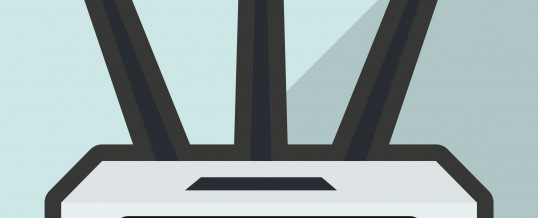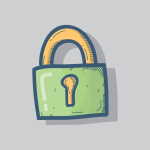“Wi-Fi is safe.” “Wi-Fi is dangerous.” Hear both sides of the debate and decide where you fall.
Our homes, businesses, schools, coffee shops, and even airplanes are all going wireless, allowing us to be connected 24/7. It’s incredibly convenient—and most of us can’t imagine life without Wi-Fi.
But is Wi-Fi safe?
There’s a lot of controversy about the potential health risks of the wireless radiation emitted by Wi-Fi, cellphones, and other devices—especially in children. Some say living in a “virtual sea of radiation” is dangerous; others believe that’s alarmist thinking with no merit.
Where do you stand? To shed some light on the controversy, we present some arguments from both camps.
“Wi-Fi is Dangerous” Camp
Health Problems
Those on this side of the aisle believe exposure to wireless radiation, even at low levels, can damage cells and DNA and cause a host of other issues, including:
- ADHD
- Asthma
- Autism
- Depression and anxiety
- Digestive issues
- Fatigue
- Headaches
- Impaired concentration
- Loss of short-term memory
- Sleep disorders
Kids Are at Greater Risk
Some believe that children are particularly vulnerable because their nervous systems and brains are still developing and their skulls are thinner and smaller—allowing for deeper penetration of radiation.
There are also claims that, because today’s youth start using cell phones at a much earlier age than their parents, they’ll accumulate many more hours of exposure to low-power radiation over a lifetime.
Young students in Wi-Fi-enabled schools have been said to experience fatigue, nausea, chest pain, and vision problems.
Possible Carcinogen?
The World Health Organization (WHO) classifies the radiofrequency electromagnetic fields (RF/EMF) emitted by radios, TVs, microwaves, cell phones, and Wi-Fi devices as Class 2B (Possible) Carcinogens. Also in this category are things like lead, chloroform, gasoline fumes, and the pesticide DDT. That means they may cause cancer in humans who are exposed at certain levels and under certain conditions.
Wi-Fi in Schools May be More Harmful Than Wi-Fi in Homes
The Wi-Fi equipment used in schools is likely to have more radios and generate more total radio power than the inexpensive wireless routers found strictly in homes. For example, a dual-band access point has at least two radios—one on each channel—and each radio emits radiation. Schools are typically equipped with many access points to accommodate everyone’s Wi-Fi-access needs.
“Wi-Fi is Safe” Camp
Lack of Proof
This group claims there’s no hard evidence that exposure to internationally accepted levels of wireless radiation is harmful to health in adults or children. At best, the “Wi-Fi is dangerous” studies are unsubstantiated.
Wi-Fi Weaklings
The level of energy produced by relatively low-power devices like Wi-Fi routers and access points is too low to disrupt DNA and should not be considered a carcinogen. Plus, users aren’t usually sitting near the router, so they’re not close enough to be affected.
Marketing Ploy
Some argue that all this fear mongering over Wi-Fi is merely a way to get people to fall for clickbait and buy protective gear, like cases, headphones, and metering devices—some of which are not scientifically proven to reduce radiation.
Not All Radiation is Equal
Extensive exposure to ionizing radiation—from X-rays, for example—can mutate cells and raise your cancer risk. These very short-wavelength waves can be dangerous. On the other hand, normal exposure to non-ionizing, longer-wavelength radiation—emitted by Wi-Fi hotspots, microwaves,* garage-door openers, etc.—is considered safe.
*Refers to the amount of radiation escaping through the shield. If you were to stick your hand inside an operating microwave, well, that’s another story.
Best Practices
No matter which way you roll, the fact remains that we’re early in the Wi-Fi game and can’t yet know its long-term health effects—and tumors take, on average, 30 years to develop.
For now, why not err on the safe side? Short of moving to a desert island, it’s impossible to avoid exposure to wireless radiation. But there are a number of things we can do to dial it down:
- Turn off wireless access points when they’re not in use to limit consistent exposure in schools
- Disable wireless on your cellphone until you need it
- Not using your phone (when sleeping, for example)? Turn it off—or at the very least, switch to airplane mode, which shuts down the Wi-Fi and cellular-radio portions
- Get SAR savvy: The FCC assigns every model cellphone a SAR (Specific Absorption Rate) value—example: when all its transmitters are fired up (cellular, Wi-Fi, and Bluetooth), the iPhone 6 has a 1.58 SAR
- The SAR dictates how far you should keep your phone from your body—from about a quarter inch to an inch, depending on the device
- A general rule is to never stash your phone in a pocket, bra, boot, etc., or anywhere next to the skin
- Texting, emailing, and surfing are preferable to talking with the phone next to your head (use a wired headset or speaker mode)
- Turn off any or all transmitters (cellular, Wi-Fi, Bluetooth) when not in use
- Restrict kids’ use of personal electronic equipment—such as cellphones, Wi-Fi-enabled laptops, and wireless games
- Push for “right to know” labeling laws requiring that cellphone companies disclose radiation levels and safe distances devices should be held from the body
- Hardwire your equipment with Ethernet cables whenever possible (added benefit: it’s even more reliable than a Wi-Fi connection)
For more info, check out the FCC’s Consumer Guide, Wireless Devices and Health Concerns.
Where do you fall on the Wi-Fi-debate spectrum? Is Wi-Fi safe…or not? Let us know in the comments section.






Thanks for reaching out!